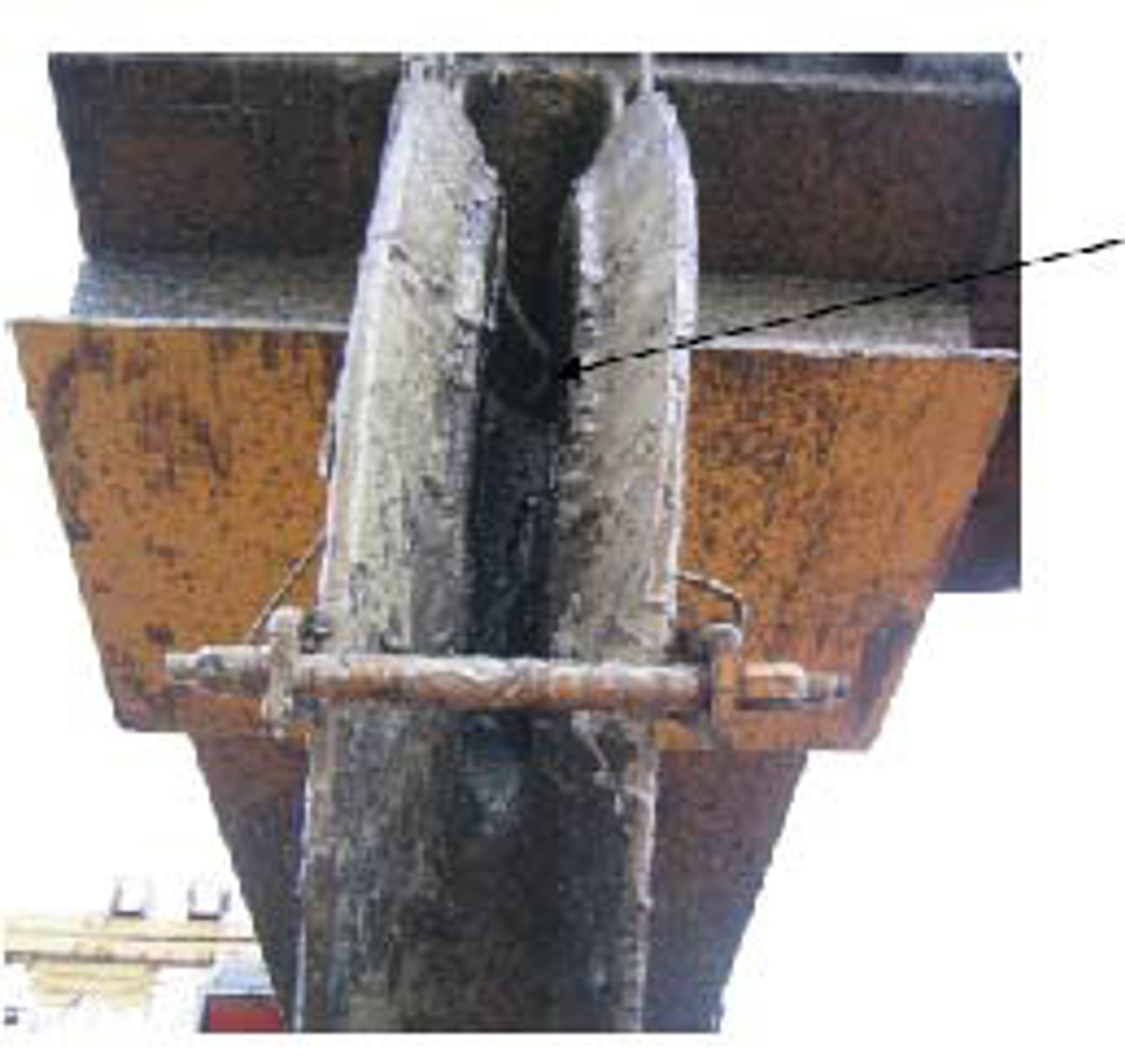Catastrophic failure of vessel main crane wire
- Safety Flash
- Published on 23 June 2008
- Generated on 9 December 2025
- IMCA SF 11/08
- 2 minute read
Jump to:
A Member has reported a serious incident onboard a vessel where the main hoist wire rope of the main crane parted whilst deployed subsea.
What happened?
The vessel crane was involved in operations in which a 20 tonne clump weight was suspended from the crane main hoist wire. The water depth at the location was approximately 1600m. It is not known to what depth the crane was deployed at the time of failure though it is believed there could have been in excess of 1400m of wire rope deployed.
The crane was a pedestal crane articulated box jib with active heave compensation and had been in operation for approximately two years.
The investigation revealed the following:
Immediate investigation identified the failure point of the wire rope to have been at the second sheave of the knuckle boom. Subsequent inspection of the sheave has identified significant damage that would be consistent with the sheave failing to rotate during the operation of the crane, and the resultant wear on the wire rope is potentially the cause of the rope failing.
The crane was operating with the heave compensation engaged at the time of the failure.
Recommendations
It is recommended that members operating vessel’s with cranes of this type carry out regular inspection of crane sheaves to identify any signs of wear that would indicate a potential failure of the sheaves to operate as designed. Members operating cranes with active heave compensation are recommended to check sheave integrity and visibly check rotation of all sheaves.

Photograph shows the wear in the crane sheave that has potentially caused the wire rope to fail
IMCA Safety Flashes summarise key safety matters and incidents, allowing lessons to be more easily learnt for the benefit of the entire offshore industry.
The effectiveness of the IMCA Safety Flash system depends on the industry sharing information and so avoiding repeat incidents. Incidents are classified according to IOGP's Life Saving Rules.
All information is anonymised or sanitised, as appropriate, and warnings for graphic content included where possible.
IMCA makes every effort to ensure both the accuracy and reliability of the information shared, but is not be liable for any guidance and/or recommendation and/or statement herein contained.
The information contained in this document does not fulfil or replace any individual's or Member's legal, regulatory or other duties or obligations in respect of their operations. Individuals and Members remain solely responsible for the safe, lawful and proper conduct of their operations.
Share your safety incidents with IMCA online. Sign-up to receive Safety Flashes straight to your email.